
|
You entered: Comet Hale-Bopp
 Springtime Comet Fever
Springtime Comet Fever
20.03.1997
Today marks the Vernal Equinox, the first day of Spring for planet Earth's northern hemisphere. Despite recent attempts by other spectacular and dramatic celestial events to take center stage, Comet Hale-Bopp remains the most popular object in the sky (according to APOD access logs!) and is likely to make this spring memorable for many.
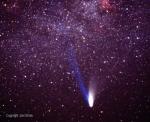 Exploring Comet Tails
Exploring Comet Tails
13.04.2000
Comets are known for their tails. In the spring of 1997 and 1996 Comet Hale-Bopp (above) and Comet Hyakutake gave us stunning examples as they passed near the Sun. These extremely active comets were...
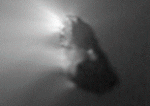 Comet Halley's Nucleus
Comet Halley's Nucleus
10.12.1996
Here is what a comet nucleus really looks like. For all active comets except Halley, it was only possible to see the surrounding opaque gas cloud called the coma. During Comet Halley's most...
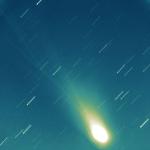 Tails Of Comet LINEAR
Tails Of Comet LINEAR
27.07.2000
Comet C/1999 S4 LINEAR is only one of many comets discovered with the Lincoln Near Earth Asteroid Research (LINEAR) telescope operating near Soccoro, New Mexico, USA. Traveling steadily southward through Earth's night...
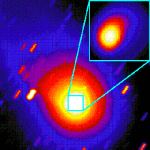 Periodic Comet Swift-Tuttle
Periodic Comet Swift-Tuttle
19.02.1996
Comet Swift-Tuttle, shown above in false color, is the largest object known to make repeated passes near the Earth. It is also one of the oldest known periodic comets with sightings spanning two millennia.
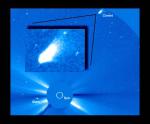 Discovery Image: Comet SOHO (1998 J1)
Discovery Image: Comet SOHO (1998 J1)
20.05.1998
Staring at the Sun from a vantage point in space (Kids, don't try this at home!), the Solar and Heliospheric Observatory (SOHO) has enabled the discovery of much about our closest star. It has also been used to discover about 50 comets.
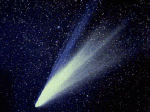 Two Tails of Comet West
Two Tails of Comet West
26.08.1995
Here Comet West is seen showing two enormous tails that wrap around the sky. The ion tale of a comet usually appears more blue and always points away from the Sun. The dust tail trailing the comet's nucleus is the most prominent.
 Comet Country
Comet Country
27.03.1997
Moonlight illuminates the landscape and lends a painterly quality to this beautiful photograph of the Absaroka mountain range, located along the Montana-Wyoming border near the USA's Yellowstone National Park. In the foreground lies the North Fork of the Shoshone River.
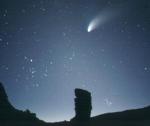 Help Aldebaran Map the Moon
Help Aldebaran Map the Moon
28.07.1997
Turn on your camcorder, go outside, and become an astronomer. How?. Tomorrow morning, our Moon will pass directly in front of Aldebaran, the brightest star in this picture and in entire constellation of Taurus.
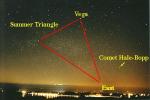 Vega
Vega
15.07.1997
Vega is a bright blue star 25 light years away. Vega is the brightest star in the Summer Triangle, a group of stars easily visible summer evenings in the northern hemisphere. The name Vega...
|
January February March April May June July |
|||||||||||||||||||||||||||||||||||||||||||||||||